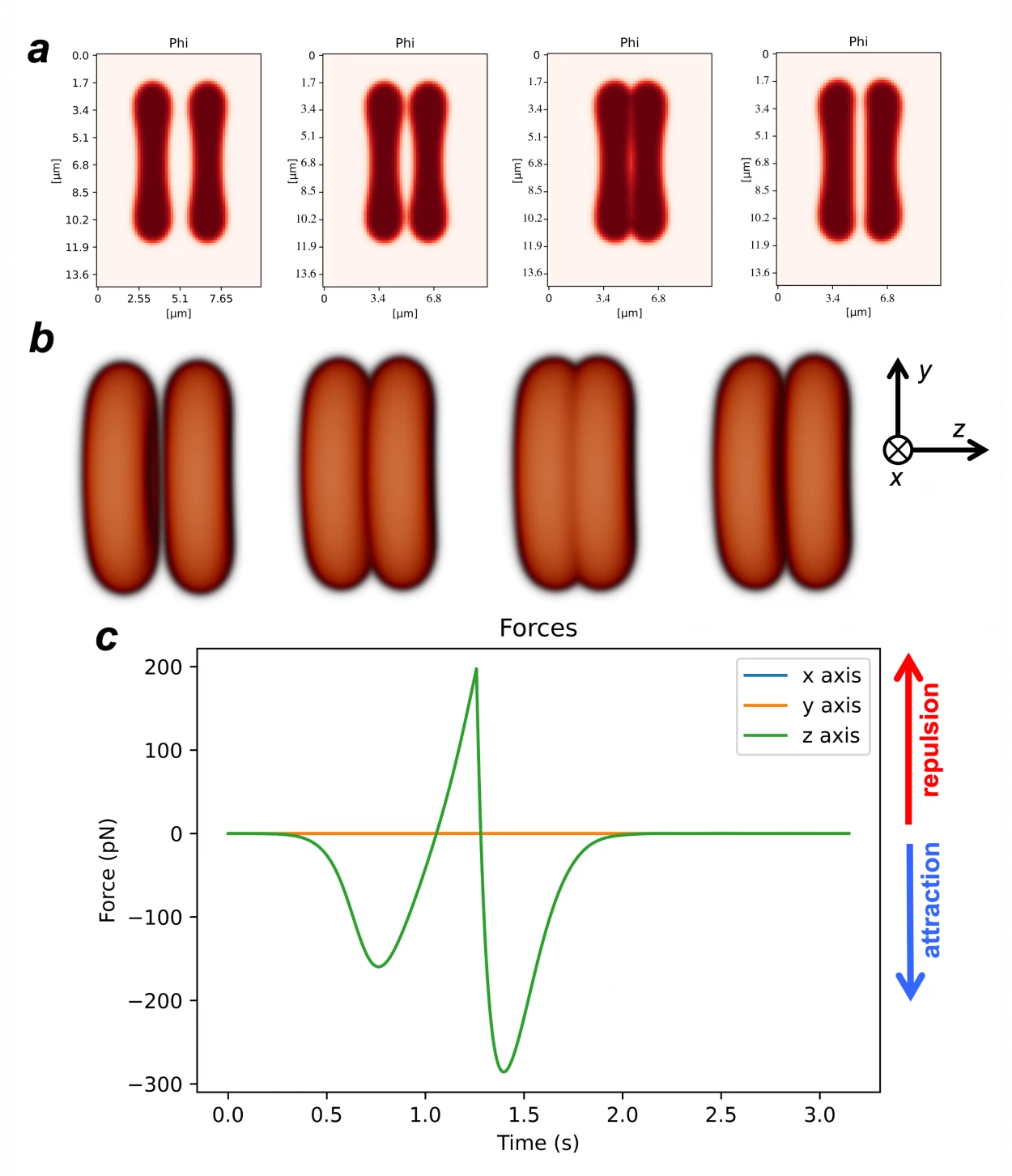Scientists use machine learning for early detection of thrombotic events
The long-term goal is to gain a deeper understanding of red blood cell processes in various pathologies to advance scientific knowledge and develop potential therapeutic interventions.
Schematic experimental setup representation of the erythrocyte-erythrocyte adhesion experiments carried out using micropipette aspiration and atomic force microscopy
A research team from the Physics Department at the Faculty of Sciences and Technology of the University of Coimbra (DF/FCTUC) has developed advanced computer simulations to model red blood cells under varying blood flow and adhesion conditions. These studies could play a key role in advancing the early detection of thrombotic events.
The research, led by the Institute of Molecular Medicine (iMM), focuses on the increase in blood viscosity, often associated with elevated levels of fibrinogen—a glycoprotein produced in the liver that plays a key role in the blood clotting process—which can worsen various clinical conditions.
Tests conducted so far suggest that elevated fibrinogen levels increase the adhesion of red blood cells. “Using machine learning and image processing techniques, we were able to automatically detect changes in the shape of red blood cells before and after they collide, and establish correlations between the simulations and experimental data," explains Rui Travasso, professor at the Department of Physics and researcher at the Centre for Physics of the University of Coimbra (CFisUC).
The next step will be to create a comprehensive database that integrates both computer simulations and laboratory experiments, allowing more robust quantitative analysis and automated classification of changes in red blood cells.
The team is also developing a machine learning-based tool to identify the most representative shocks of experimentally observed changes.
Preliminary results are promising and show that the approach works. The long-term goal is to gain a deeper understanding of red blood cell processes in various pathologies to advance scientific knowledge and develop potential therapeutic interventions.

